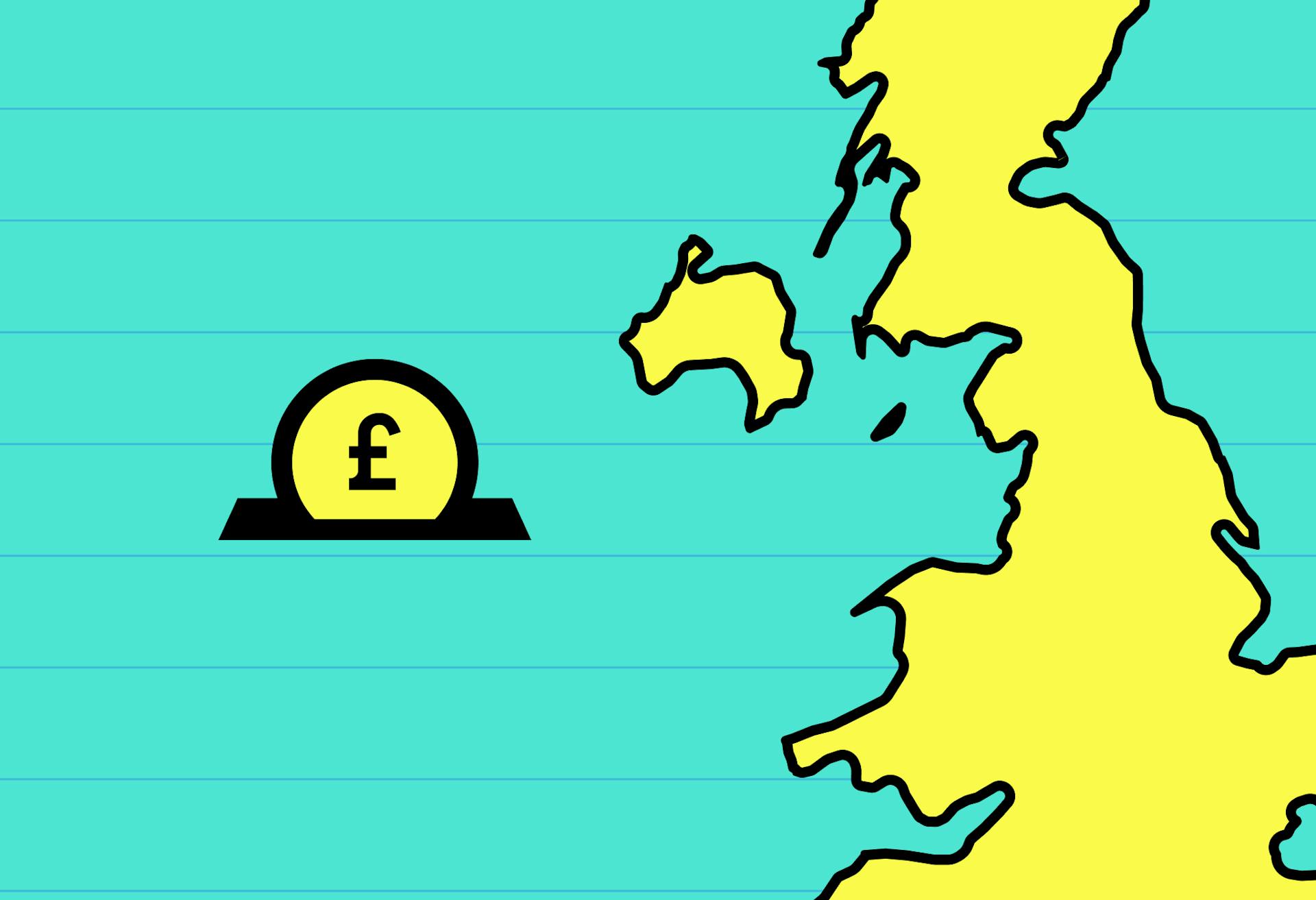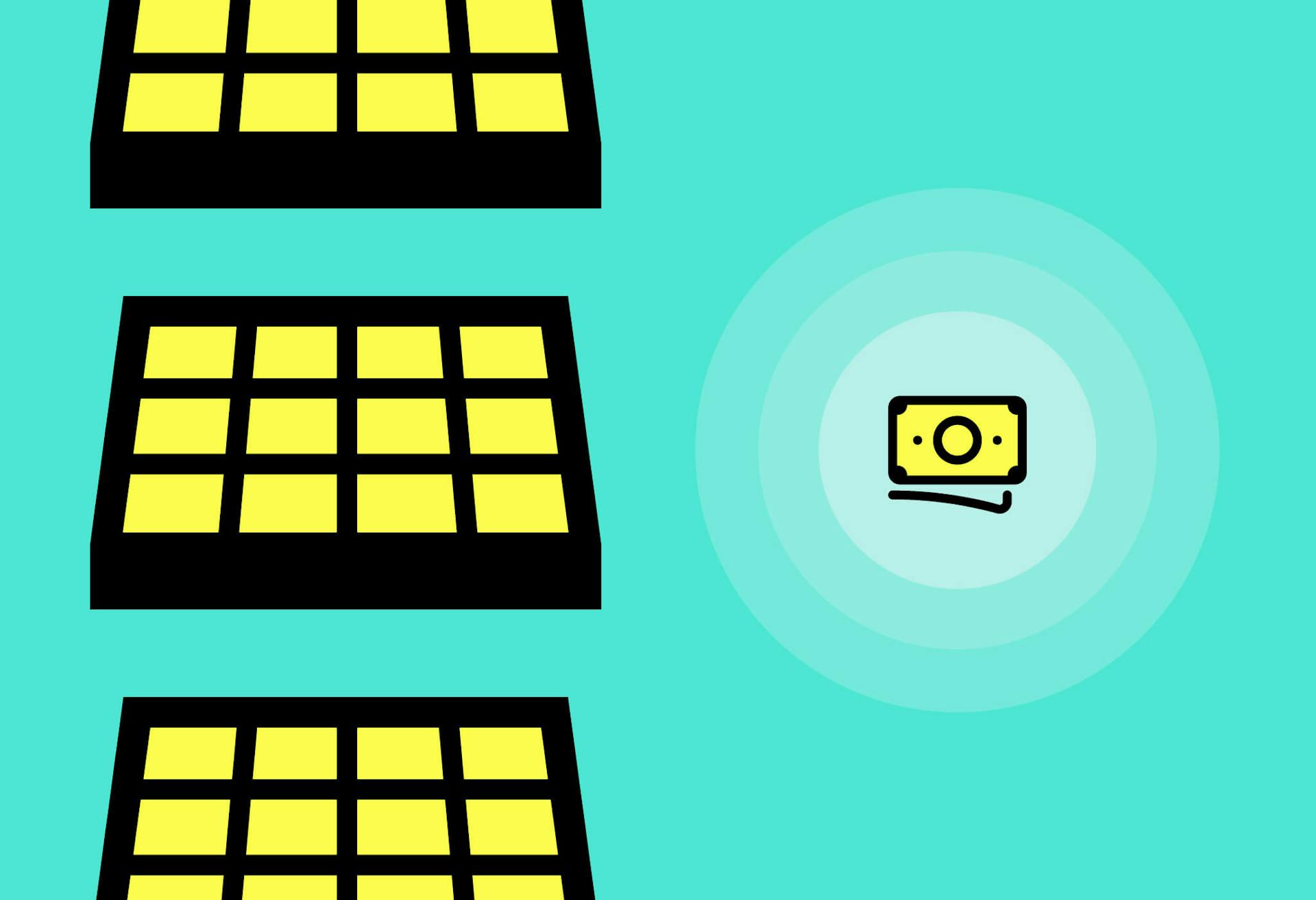- Solar advice hub
- Costs
- Solar Together: is it worth it?
Solar Together: is it worth it?
We run through exactly how Solar Together works, its key benefits and drawbacks, and some of its main successes and failures.


Why you can trust our content
We know that the solar industry is full of misinformation, but we only use reliable sources, including:
- Our experienced solar experts, installers and system designers
- Our own database of solar & battery system designs
- Authoritative bodies like MCS and the UK government



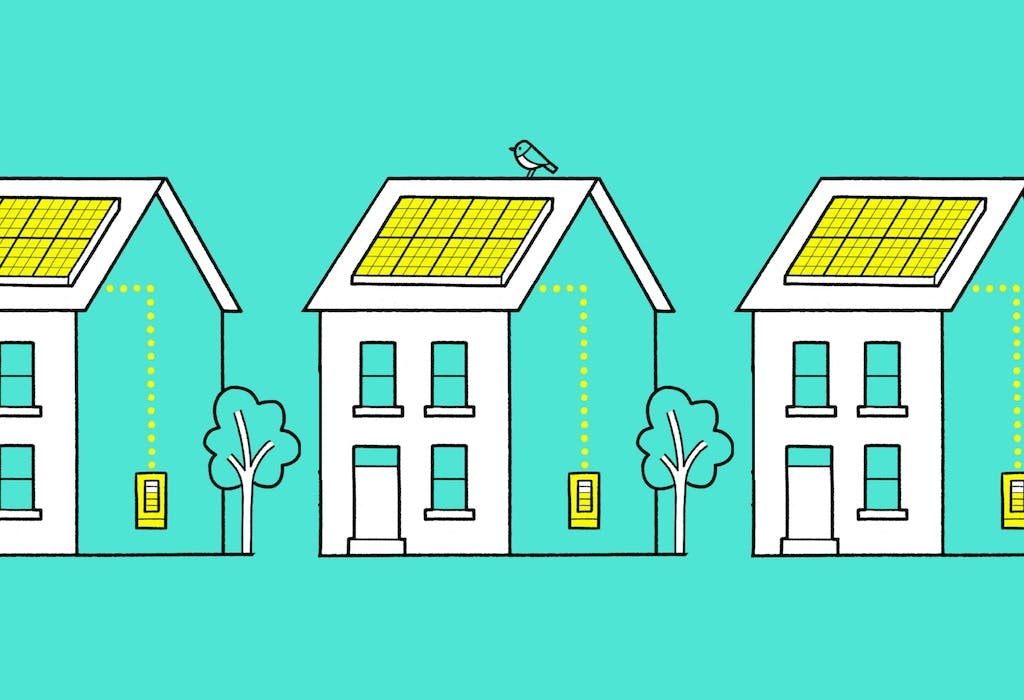
Calculate savings
What kind of home do you live in?
Calculate savings
What kind of home do you live in?
Solar Together: at a glance
The Solar Together scheme aims to make solar energy adoption simple, cost-effective, and community-driven across England and Wales.
But while the initiative may seem appealing for anyone seeking an affordable solar installation, it has some major drawbacks, and some of its schemes have led to significant problems for homeowners.
And if you want to switch to solar but are put off by the high upfront cost, Solar Together only makes a relatively small difference.
In contrast, our solar subscription is available at no upfront cost, and instead has a fixed monthly fee for 20 years. To find out how much you could save, just enter a few details below and we'll provide an estimate.
Find out how much you can save
What kind of home do you live in?
What is Solar Together?
Solar Together is a group-buying scheme that helps households in England and Wales to get solar panels at lower costs.
It achieves this by getting hundreds or thousands of residents to sign up for a solar installation, then giving all those jobs to one installer, who charges a lower, bulk price.
The scheme can help people to go solar for less – it’s secured 20-30% reductions in cost, according to the Greater London Authority (GLA) – but it has its drawbacks, which we’ll go into further down.
Solar Together is run by a private Dutch company, iChoosr, which was founded in 2008 and launched in the UK in 2012.
Since then, according to iChoosr, Solar Together has worked with more than 200 councils to get 276,000 solar panels installed on 300,000 households.
But the company relies on these local authorities for promotion, like the £1 million spent by the Greater London Authority to advertise Solar Together – which ended disastrously, as you’ll see below.
How does Solar Together work?
Solar Together operates through a simple process:
1. Registration
If you live in an area currently taking part in a scheme, you can complete the form on Solar Together’s website. You’ll have to provide details about your household, roof, and electricity consumption.
Solar Together usually sets a timeframe in which people must express their interest, and will move forward if enough households sign up – generally at least a few hundred, though this varies by location.
To be eligible, you must live in a participating area, and either own a house or have permission from your landlord. Small and medium-sized businesses can also sign up, as can commonhold associations.
2. Auction
Solar suppliers that meet iChoosr’s requirements compete in a reverse auction for the right to install the group's systems.
The only way for installers to win is to make the lowest bid, which can lead to significant quality issues, which we explore lower down.
3. Recommendation
Once the auction finishes, you'll receive an email that reveals who won the reverse auction, and what your installation would look like.
This includes the cost, system specifications, and your projected savings.
4. Decision
There's no obligation for you to accept this offer, and you’ll get to watch a webinar from the winning installer to help you make your decision.
If you do decide to move ahead, you'll have to pay a £150 deposit.
Once your system has been installed, this deposit is deducted from your final bill and given to the installer.
You’ll also get your deposit back in full if you cancel the job at any time before the roof survey happens.
If you don’t manage to secure planning permission or a personal loan you applied for before accepting the offer, you can get the full deposit back – just make sure you cancel five days or more before the installation.
You’ll also get your deposit refunded if:
- the system doesn’t fit on the roof
- the solar panels would pose a risk to the roof
- you’d need to pay unforeseen additional costs for the system to be installed, and you don’t want to
- the direction of your roof is unfavourable
- there’s too much shade on your roof for it to achieve projected generation levels
- your roof contains asbestos
5. Installation
The winning installer will get in touch to book in your survey and solar installation.
Solar Together schemes will usually state their aim to complete all installations within six months of the last acceptance of an offer, though this is just a rough goal.
Where is Solar Together available?
Solar Together is available in some parts of England and Wales, but not all.
As of December 2025, this includes 217 out of the 339 local authorities in the two countries – less than two-thirds.
Unfortunately, the scheme isn’t available in any areas of Scotland or Northern Ireland.
And it only runs in a limited number of councils at one time, which adds to the waiting period if you’re not lucky enough to be in a qualifying area for a while.
You can check if there’s an active scheme in your area by using Solar Together's interactive tool. All the places under “Past schemes” don’t have a scheme running at the moment.

The pros and cons of Solar Together
Solar Together provides a lower upfront cost than you’ll usually get, which can seem appealing to anyone who wants their switch to solar to be as cheap as possible – at first.
Unfortunately, this emphasis on lower prices can create some significant drawbacks.
The advantages of Solar Together
- Lower upfront cost
- Simpler process
Lower upfront cost
As stated above, households have saved 20-30% by going solar through Solar Together, though this figure could be higher or lower for you.
Unfortunately, this isn’t enough of a saving for most people to afford the switch to solar.
The average cost of a 4.5kWp solar panel system and battery for a typical two or three-bedroom property is over £11,000, and the average amount people have saved is £5,000-£6,000.
So even though a 30% saving is appealing, it’d still produce a prohibitively expensive price that most households can’t afford.
Even more problematically, this lower cost – which is necessary to win a reverse auction – is often achieved by installers that cut corners and offer lower quality kit.
A simpler process
With iChoosr doing the work of finding an installer, you just have to sit back and wait to see which company emerges from the process.
This reduces the time and effort required to go solar, but with an important drawback: the firm that wins the reverse auction isn’t necessarily the best choice for you.
It’s therefore crucial that you look into the installer in question, including their history, reviews, and the equipment they use.
Just because a company has been approved by iChoosr, doesn’t necessarily mean it’s a good pick. Do your own due diligence on them, using our guidance on how to choose an installer, and get other quotes too.
That way, you can compare their prices, equipment, and which services they offer before making your final decision.
And we’d recommend considering Sunsave Plus, the UK’s first solar subscription.
It lets you switch to solar with no upfront cost, and comes with the 20-year Sunsave Guarantee, which provides monitoring, maintenance, a free battery upgrade and inverter replacement, and downtime payments.
If you'd like to find out how much getting a solar & battery system with Sunsave Plus could save you on your energy bills, enter a few details below and we'll provide an estimate.
Find out how much you can save
What kind of home do you live in?
The disadvantages of Solar Together
If you go with Solar Together, you run the risk of ending up with:
- Subpar hardware
- A subpar installer
- A long wait for installation
Subpar hardware
The minimum requirements that iChoosr sets for its installers’ products are low compared to the market standard today, which means you risk ending up with inferior hardware – and that can cost you.
Solar panels should save you hundreds of pounds per year for decades to come, and your inverter and battery should play crucial roles in making the most of this process.
Unfortunately, iChoosr’s standards are poor. The company’s minimum efficiency requirement for solar panels is 18.1% , which is way behind the market average of 22.6% that we’ve calculated after analysing 110 panels.
This is a 25% difference – and everything else being equal, it would directly lead to your system producing 25% less electricity. Over its lifespan, that could be worth thousands of pounds.
And then there are the inferior warranties. Manufacturers of the chosen panels must provide a “minimum product warranty of 12 years”, which is the least you’d expect. It falls short of best practices – and also middling practices.
Worryingly, the same page also says: “The solar panels, inverter and mounting materials all have a product warranty of at least 10 years.” Confusing. But whether it’s 10 years or 12, it’s still a short product warranty.
From assessing 37 solar panel manufacturers, we’ve determined that the average product warranty for panels is 18.8 years – and you deserve at least the average.
Customers will also see that panels must come with a “minimum power output warranty of 25 years”, which is all very well, except performance warranties are meaningless without a guaranteed minimum amount of power.
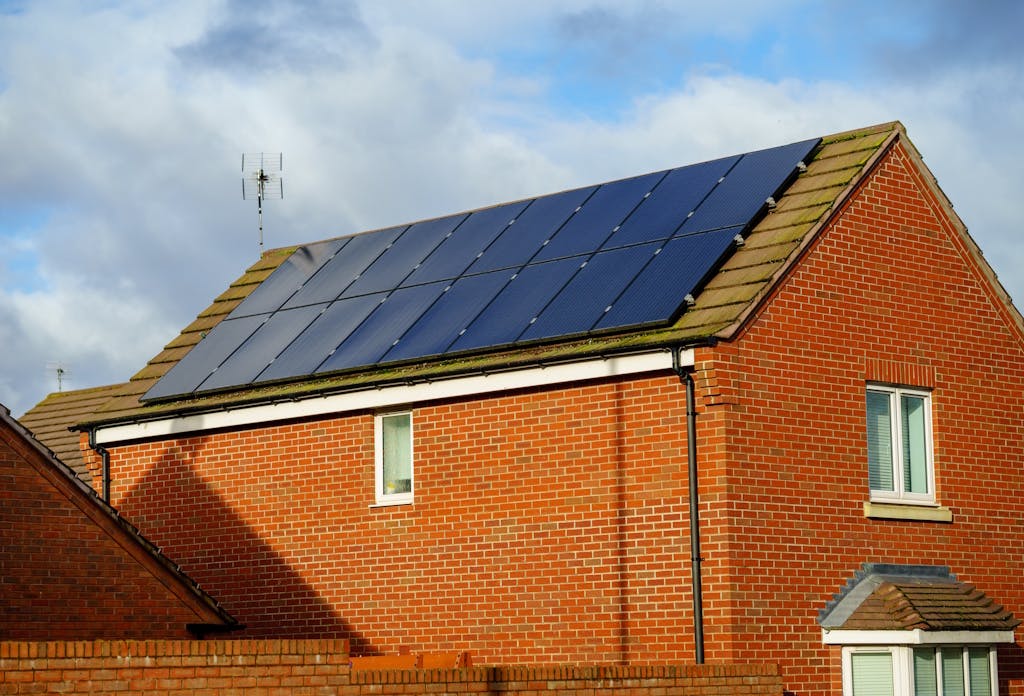
At the 25-year point, some suppliers promise 92% of a panel’s original output, while others go as low as 83.1%.
For a 4.5kWp system with average UK irradiance of 850 kilowatt-hours (kWh) per kilowatt-peak (kWp), this means producing 340kWh less per year, which adds up to £94, as of the January 2026 energy price cap.
This difference could cost you many hundreds of pounds over a standard solar panel system’s lifespan, which is 30-40 years – so it’s worth looking at the warranties for your installer’s equipment.
The requirements also don’t specify the minimum amount of experience for a solar panel or inverter manufacturer to qualify. As stated in the Solar Together London (STL) report, this should typically be “at least 10 years”.
Other worrying gaps include zero references to inverter sizing checks, total harmonic distortion, light induced degradation, or potential induced degradation, which should all be standard.
The Solar Together London report said that “some elements of the PV solar equipment specified by iChoosr are lower than would typically be expected of a domestic rooftop solar PV specification, which will have likely contributed to some of the cost reduction.
“In particular, the installation of lower quality inverters will have reduced cost. The consequence of this decision by iChoosr may be increased warranty claims and complaints in the future.”
The other main consequence is households saving less on their energy bills.
A subpar installer
You should always choose an installer that’ll be there to support you for decades to come, as a solar & battery system is a long-term investment that requires monitoring and maintenance.
Batteries usually need to be replaced after 10-12 years, and a study in 2019 by risk management experts DNV found that one half of inverters fail by year 14.
Solar Together has set a precedent for choosing questionable installers – in London, at the very least.
Between 2020 and 2023, Solar Together worked with five installers in the capital: Solarcentury in 2018, Ecolution in 2018-19, First 4 Solar in 2019-20, Spirit Energy in 2019-20, and GET in 2020-21.
Of these five installers, two have since gone bust – First 4 Solar and Green Energy Together (GET) – while Solarcentury was acquired by the Norwegian state and ceased trading under that name.
You can refuse Solar Together’s choice of installer with no negative consequences; you just won’t get to participate in the scheme.
To be approved by iChoosr, installers must be MCS-accredited and members of Home Insulation and Energy Systems Quality Assured Contractors Scheme (HIES) or Renewable Energy Consumer Code (RECC).
However, there’s no requirement to be Trustmark-approved, registered with NAPIT, EPVS-approved, or a Which? Trusted Trader – all accreditations that we have.
Also, iChoosr is strangely secretive about its assessment procedures, which doesn’t bode well.
The Solar Together London report said: “iChoosr has not disclosed the minimum score required for supplier pre-qualification, making it impossible to evaluate the set quality standards or determine if the quality threshold was appropriate”.
It added: “Nonetheless, there is an indication that the minimum quality score might not have been appropriate, as evidenced by the selection of an installer with a membership application declined by RECC, known performance issues, and a high level of complaints in a previous STL phases; GET UK, were still awarded a contract for Phase 5.”
A long wait for installation
If you’re ready to go solar when a Solar Together scheme launches in your area, you could be waiting for a long time before your system is up and running.
Each scheme typically stays open for two or three months – and this initial deadline is sometimes extended, as it was for Swindon and Wiltshire residents in 2025.
Solar Together will then hold a reverse auction and decide who to hire, after which the chosen installer will send offers to the participants, who’ll have some time to decide whether to opt in.
Every system will then need to be designed, all complications (from shading to roof repairs) will need to be handled, and every installation has to be scheduled in.
That’s why Solar Together schemes typically come with the aim of completing all installations within six months of the last person accepting their offer.
All in all, signing up in March may not result in you getting your system until December – which means missing out on many months of solar panels reducing your energy bills.
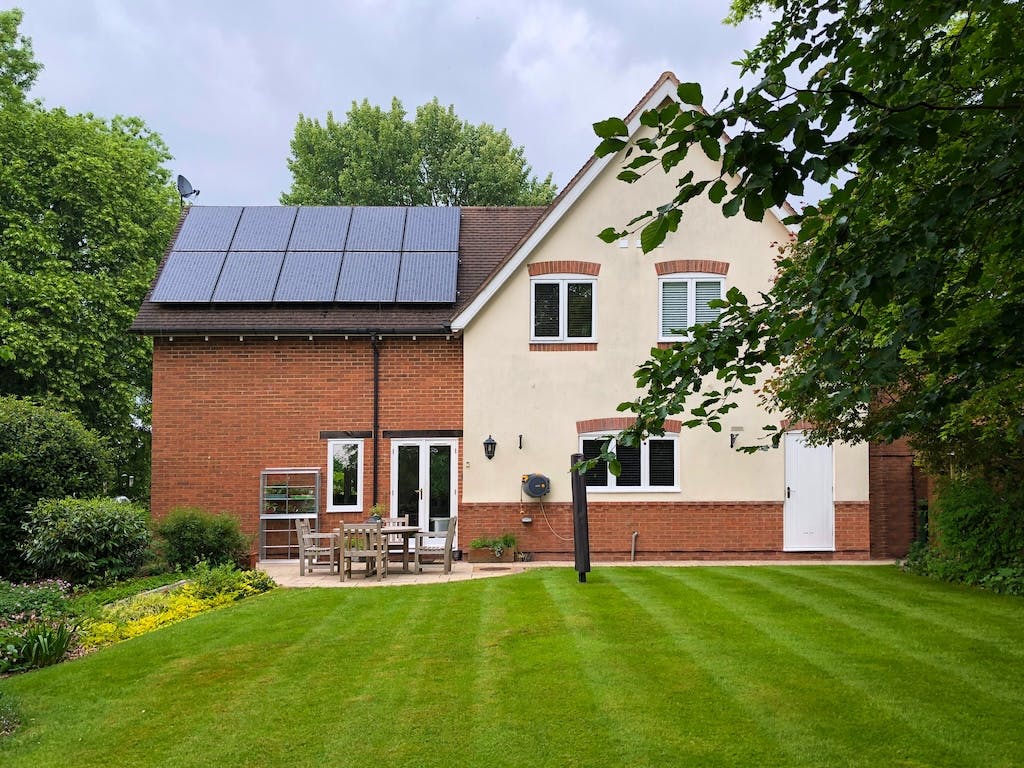
Solar Together’s failures
Several Solar Together initiatives haven’t gone to plan, which is clear in the nearly 500 one-star reviews the scheme’s received on Trustpilot.
In London, the GLA spent more than £1 million promoting the Solar Together London scheme, only for its largest phases – four and five – to be plagued with problems.
Using the auction and vetting process we’ve outlined above, iChoosr selected GET as its only installer for phase four, and – despite mounting issues – as one of three installers for phase five.
The MCS and HIES both withdrew GET’s accreditations in March 2023, then the installer went into administration. This left many households without a deposit, with a half-finished installation, or with an unaccredited system.
In its independent assessment, AECOM said that “iChoosr ignored red flags highlighted by RECC to proceed with the appointment of GET.”
In all, there were 996 complaints made during phases four and five, as of June 2024 – most of them to do with communication and installation delays.
AECOM also highlighted iChoosr’s management of complaints, saying that “boroughs had to step in to manage resident’s concerns during and following the failure of GET.”
Little wonder then that “two-thirds of boroughs reported a poor to below average overall experience of the STL programme”, according to AECOM.
The GLA admitted that some customers received “an unacceptably poor service” from Solar Together.
Everyone affected did either receive a refund or get their installation certified by MCS in the end.
And AECOM’s 2024 report on Solar Together London indicated that iChoosr has made several changes to its auction and vetting procedures – but despite that, its problems have continued.
Fusion8, a firm that iChoosr selected to install systems for Solar Together Hampshire in 2024, was removed from the scheme in May 2025 after losing one of its accreditations, then entered liquidation a month later.
This left some customers in the lurch, trying to recover deposits of up to £2,000. These deposits were reportedly given back by the end of July 2025 , but not before causing much distress to participants.
Solar Together’s success stories
Some Solar Together schemes have done exactly what they promised to do, with solar panel systems installed on hundreds or even thousands of homes at lower prices.
In Suffolk, the Solar Together initiative has been a resounding success, with over 2,100 households installing solar panels since 2018.
Participants have reportedly saved an average of £2,000 on installation costs and around £140 annually on energy bills.
The scheme in Essex has also seen impressive results. The fourth time it came to the county in 2023, a total of 6,600 signed up and received an average discount of 32%.
And in the West of England, three Solar Together schemes in 2021, 2023, and 2025 have delivered more than 2,400 installations.
Participants received discounts of 22% in the first phase, 34% in the second, and 41% in the third.
The best alternatives to Solar Together
Even with the typical discounts offered by Solar Together, a solar & battery system is financially out of reach for most households.
If you decide against joining the scheme, you can access other paths that remove the upfront cost of solar entirely.
A solar subscription
Sunsave Plus is the UK’s first solar & battery subscription service. It means you can switch to solar with no upfront cost, and instead pay a fixed monthly fee across 20 years.
Every Sunsave Plus system is protected by the 20-year Sunsave Guarantee, a support package that includes 24/7 monitoring, maintenance, a free battery upgrade, a replacement inverter if required, and downtime cover.
Also, your system will be insured by Aviva against damage, fire, and theft.
To find out how much you can save with Sunsave Plus, enter a few details below and we’ll provide an estimate.
Find out how much you can save
What kind of home do you live in?
Solar panel grants
There are a couple of solar panel grants that UK homes may be able to access.
The £500 million Warm Homes: Local Grant (WH:LG) provides funding for energy-inefficient households in England that are deprived, low-income, or receive a means-tested benefit.
Eligible homes could secure energy performance upgrades and low-carbon heating systems worth up to £30,000 – including solar panels.
ECO4 is set to end on 31 March 2026, but any households in Great Britain that submit a successful application before then may be able to get a free solar panel system.
To qualify, your home’s primary heating system must be powered with electricity, and your property must be energy-inefficient.
Your household must also either contain a vulnerable resident, a means-tested benefit recipient benefit, or earn less than £31,000 in total income.
To see which schemes could suit your household, use our grant eligibility checker.
Summary
Solar Together is a proven way to go solar for a lower price, but it comes with multiple risks.
Previous customers have endured issues with hardware quality, installation standards, and long-term maintenance support – and that’s without even mentioning the stress of dealing with an installer going bust.
You’d also forgo some of the key benefits of switching to solar, like being able to get your installation sorted quickly so you can start saving as soon as possible.
If you’re thinking of signing up for Solar Together, you should still get quotes from multiple other solar installers, so you can compare them and make the right choice for your home.
Solar Together: FAQs
Related articles

Written byJosh Jackman
Josh has written about the rapid rise of home solar for the past six years. His data-driven work has been featured in United Nations and World Health Organisation documents, as well as publications including The Eco Experts, Financial Times, The Independent, The Telegraph, The Times, and The Sun. Josh has also been interviewed as a renewables expert on BBC One’s Rip-Off Britain, ITV1’s Tonight show, and BBC Radio 4 and 5.



